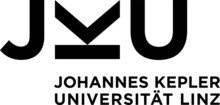Lee Rozema: Quantum Ultra Broadband Entangled Light with Two-Dimensional Materials (QUBELT)
Quantum photonic technologies rely on photon sources with specific properties for different applications. Conventional methods of generating entangled photon pairs have limitations that restrict their flexibility. Within this project we follow a promising new approach using ultra-thin nonlinear media to eliminate these limitations while also enabling real-time control of the emitted photon pairs' properties. We aim to produce ultra-broadband entangled photon pairs using the thinnest possible nonlinear medium - a single atomic layer of a two-dimensional material, such as graphene or a transition metal dichalcogenide (TMD). This project has the potential to significantly improve the performance and flexibility spontaneous photon pair sources. Moreover, the use of nano-scale photon sources enabled by this approach could find applications in integrated photonics, leading to more compact and efficient quantum devices.
This ESQ Discovery grant allows me to push forward a new idea that could form the basis for longer-term investigations on the quantum plasmonics.
Navigation
Contact
ESQ Office
Austrian Academy of Sciences (ÖAW)
Atena Zalbeik-Dormayer
Boltzmanngasse 5
1090 Vienna
office(at)esq-quantum.at






